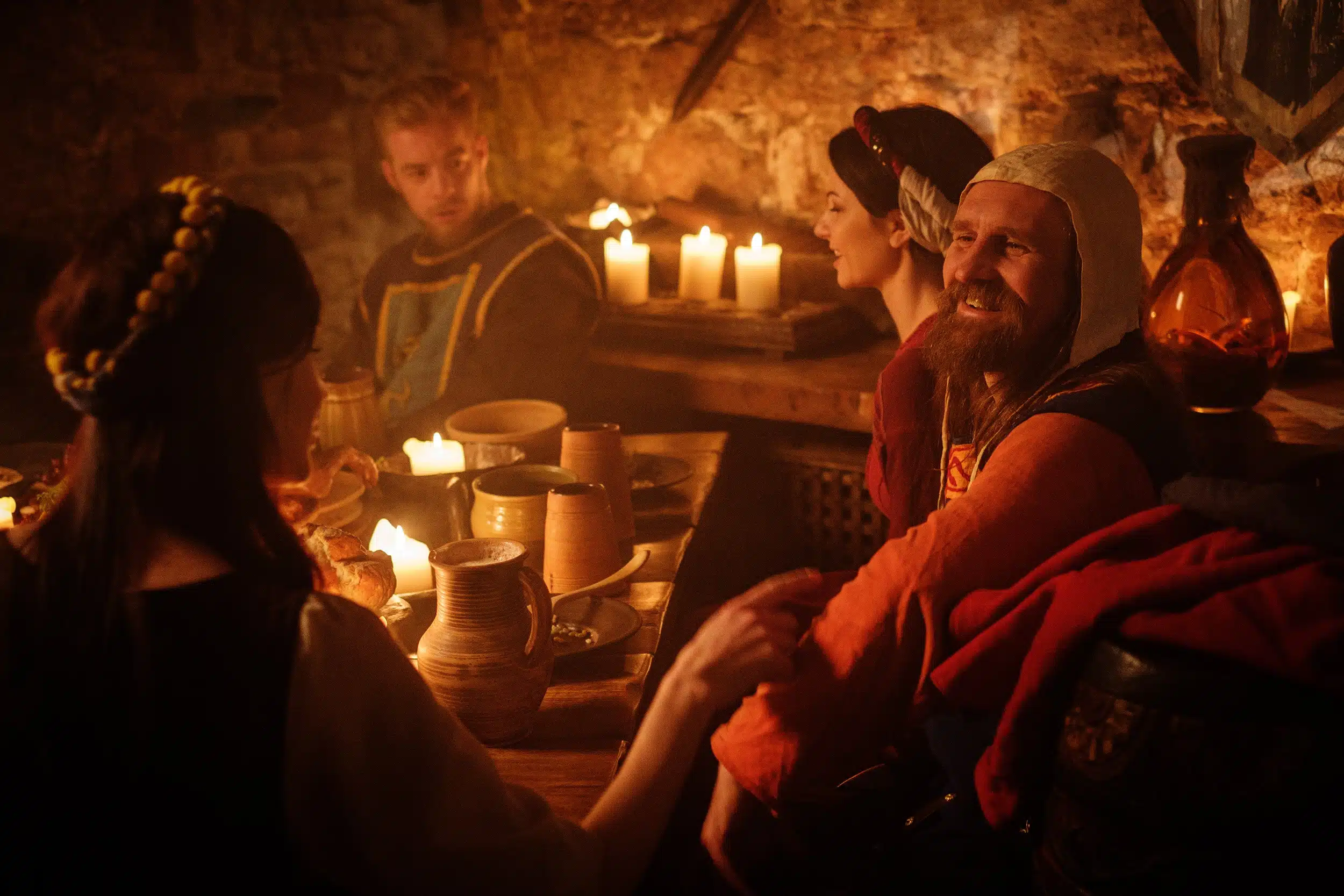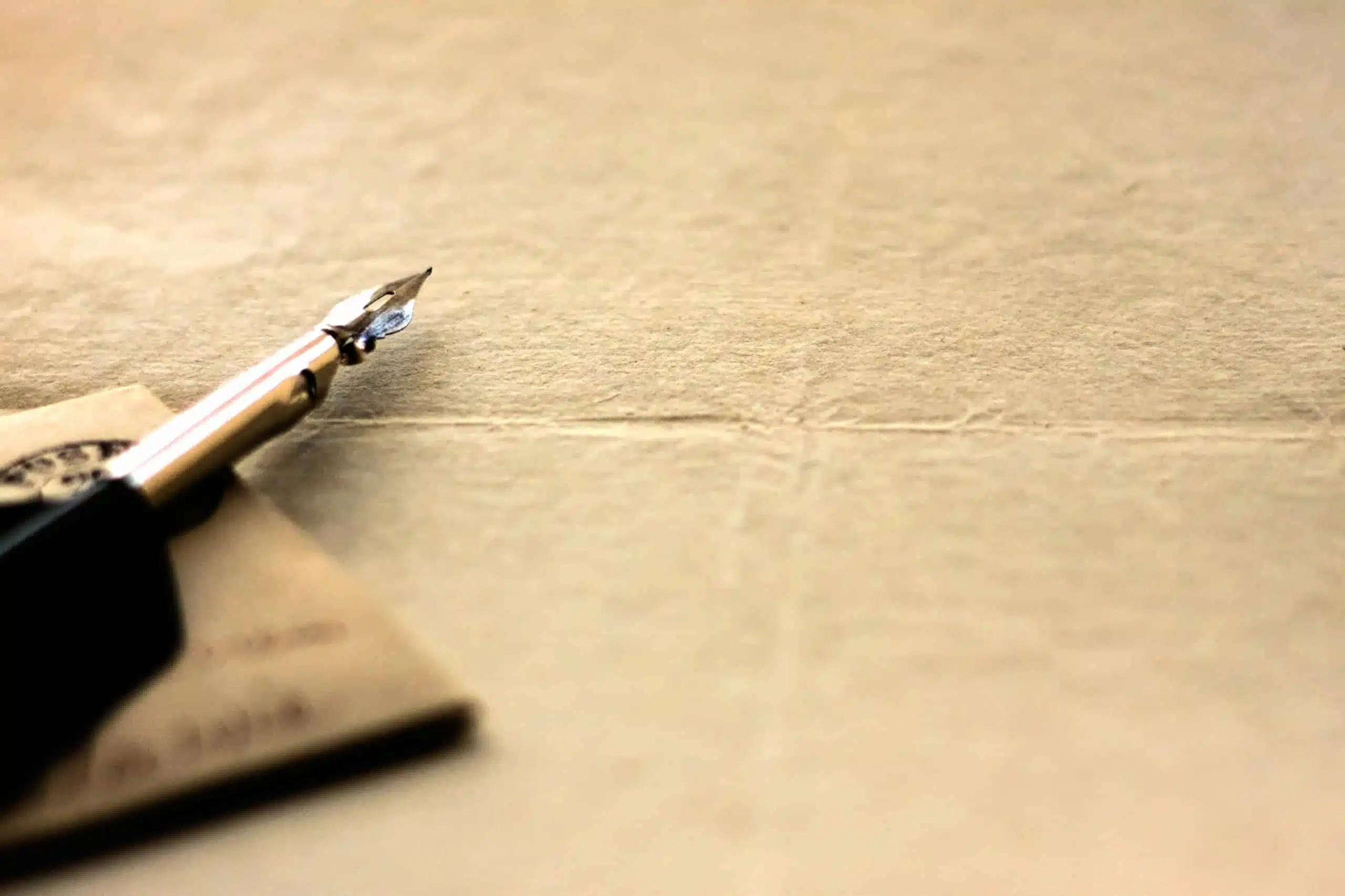Here’s what the Casbairdne poetry form is:
Casbairdne is a verse form from ancient Ireland consisting of quatrains that feature isosyllabic lines of seven syllables each.
This form heavily employs cross-rhyme and consonance to construct a form that is as interconnected and impressive to the ears as it is difficult for the composer/writer to construct.
So if you want to learn all about the Casbairdne poetry type, then you’ve come to the right place.
Keep reading!

Forms of Poetry: Casbairdne

As with many Irish forms, casbairdne refers to a verse comprised of rhymed quatrains.
In this case, the lines are isosyllabic, with seven syllables per line. The second and fourth lines rhyme.
Ancient Irish poems do not employ meter, despite naming specific syllable counts.
The traditions of these old Irish forms largely predate written poetry.
Casbairdne was conceptualized at a time when oral traditions were still the norm and as such focuses heavily on sound and rhyme, which were used to make poems easier for reciters to remember.
But the many stringent requirements of casbairdne certainly aren’t forgiving for the composer.
Basic Properties of a Casbairdne Poem

| Rhyme Structure | Yes |
| Meter | No |
| Origin | Irish oral traditions |
| Popularity | Uncommon; mostly restricted to the history of the region |
| Theme | Varies |
How Is the Casbairdne Poem Structured?

Casbairdne is always an isosyllabic verse with seven syllables per line.
There are exactly four lines per stanza (quatrains) and the poem can go on for any number of quatrains, including potentially just one.
The second line and fourth lines share an end rhyme.
Every line will end on the same consonant sound, but not necessarily a rhyme (except on the aforementioned lines).
Every rhymed couplet also shares at least two internal rhymes, though their position isn’t necessarily static within the lines.
As a quick aside, some sources instead say that the consonance of the end words only needs to apply to the couplets.
However, it would be difficult to do this without accidentally making all four lines share consonance anyway since the couplets are interconnected by the rhyme scheme.
The poem is expected to end with the same syllable, word, or phrase that it began with, in the tradition of the dunadh.
As if all this wasn’t difficult enough, the end sounds are trisyllabic, including the end rhymes.
Also, the final syllable of line four alliterates with the stressed word preceding it.

Sounds perfectly reasonable to do within 28 syllables, right?
While many Irish forms are pretty coherent in English, there’s a reason this one mostly stayed in Celtic traditions.
It can be brutally difficult to keep track of all these restrictions and the form was likely designed explicitly as a challenge for poets to overcome to prove their skill (both to each other and to audiences).
One saving grace of casbairdne is that like other old Celtic forms, it is not actually metered.
While Irish poetry does explicitly define syllable counts, it does not traditionally prescribe which syllables are supposed to be stressed or unstressed, outside of very specific instances.
Example of Casbairdne

Lamented for days untainted
a faint loving so cemented
in the mind more dear enchanted
gladly said or laid lamented
The above poem is my rudimentary attempt at casbairdne, focused intently on the sounds rather than the meaning. (In modern terms, an abstract poem.)
The takeaway here is the cross rhyme featured within the poem, though it is a bit less consistent than a traditional casbairdne should probably allow.
Frankly, this is one time when I would have loved to pull a famous example that does a better job of the form, to be sure that it hits every mark properly.
But casbairdne is almost never utilized in English.
As a result, none of the examples available were in the public domain, nor were they from established experts of the form.
The good news is that if you do become a revered writer of English casbairdne poems, you will undoubtedly be the first poet to be famous for specializing in such a niche form.
Tips for Writing a Casbairdne

Be stubborn.
Casbairdne, much like other verse forms that have a high bar to entry, will require diligence and persistence.
Writing an abstract poem using the form, as in the example above, is doable, but I’ll openly admit that it doesn’t make for an impressive poem.
If you really want to crack open casbairdne, then I recommend doing extensive research on the traditions of Celtic poetry and mastering some other Irish forms first as practice.
There are multiple verse forms that employ quatrains and the dunadh.
Getting a feel for the general aesthetic and techniques expected of Celtic poetry will help you to solidify your understanding of why and how the form functions.
Also, don’t be a slave to the form. One thing I noticed among the few examples I did find is that there would often be one or two cross-rhymes dropped or a few rules bent or broken here and there.
That’s honestly pretty typical for high-level poems and is why you’ll often see more slant rhyme in poems with exhaustive rhyme schemes.
It helps that the form is relatively unknown in English, so there won’t be much criticism coming your way, to begin with.
But just remember that nailing the general feel and intent of the form is more important than getting everything exactly right.
Do try to set a standard for what rules must never be broken, in your opinion.

For me, I would say that you absolutely must have quatrains, 7-syllable lines, consonance on the end sounds, and the end rhymes of the first and third lines.
The positioning and presence of the cross-rhymes are where the flexibility is at its most debatable but do try (in general) to do everything you can to achieve the form.
If you happen to have any friends from Ireland who might know about the history of their country’s poetry, for one reason or another, then leverage that to your advantage.
Most sources regarding Celtic poetry are secondhand at best, so you would have a significant lead if you found an Irish scholar who’s willing to give you a crash course.
All that said, it isn’t like you’ll have a great deal of competition to worry about.
Do your best, but if you find that your poem naturally wants to bend out of the shape of casbairdne, then let it.
What matters to your readers is the quality of your work. So if that quality would suffer because of a form that doesn’t feel natural to you, then you don’t need to force yourself to master it.
Just treat casbairdne verse as a fun intellectual exercise that may or may not lead to some good poems if you’re willing to really stick with it.
Poet’s Note

My sincerest condolences to the poet who first invented this form.
Losing his sanity after convening with the old gods of chaos must have been pretty traumatizing.
Comprehensive Collection of Poetry Forms: Craft Words Into Art

Dare to traverse the entire spectrum of poetic forms, from the commonplace to the extraordinary?
Venture from the quintessential Sonnet to the elusive Mistress Bradstreet stanza, right through to the daunting complexity of Cro Cumaisc Etir Casbairdni Ocus Lethrannaigecht.
For those with a zeal to encounter the full breadth of poetry’s forms, this invitation is yours.
Start exploring the vast universe of poetic ingenuity with our comprehensive array of poetry forms right now!
